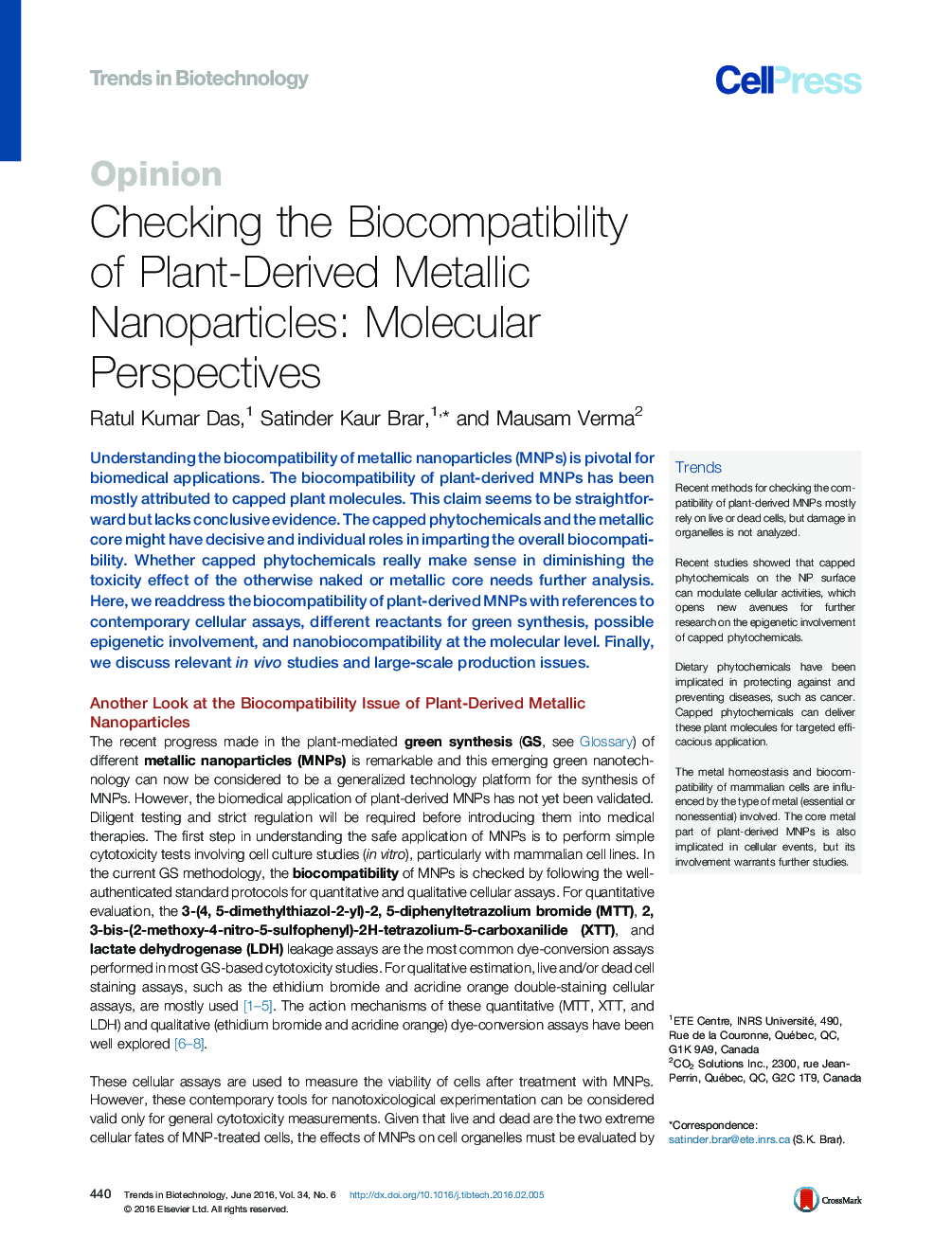| Article ID | Journal | Published Year | Pages | File Type |
|---|---|---|---|---|
| 36814 | Trends in Biotechnology | 2016 | 10 Pages |
Understanding the biocompatibility of metallic nanoparticles (MNPs) is pivotal for biomedical applications. The biocompatibility of plant-derived MNPs has been mostly attributed to capped plant molecules. This claim seems to be straightforward but lacks conclusive evidence. The capped phytochemicals and the metallic core might have decisive and individual roles in imparting the overall biocompatibility. Whether capped phytochemicals really make sense in diminishing the toxicity effect of the otherwise naked or metallic core needs further analysis. Here, we readdress the biocompatibility of plant-derived MNPs with references to contemporary cellular assays, different reactants for green synthesis, possible epigenetic involvement, and nanobiocompatibility at the molecular level. Finally, we discuss relevant in vivo studies and large-scale production issues.
TrendsRecent methods for checking the compatibility of plant-derived MNPs mostly rely on live or dead cells, but damage in organelles is not analyzed.Recent studies showed that capped phytochemicals on the NP surface can modulate cellular activities, which opens new avenues for further research on the epigenetic involvement of capped phytochemicals.Dietary phytochemicals have been implicated in protecting against and preventing diseases, such as cancer. Capped phytochemicals can deliver these plant molecules for targeted efficacious application.The metal homeostasis and biocompatibility of mammalian cells are influenced by the type of metal (essential or nonessential) involved. The core metal part of plant-derived MNPs is also implicated in cellular events, but its involvement warrants further studies.
